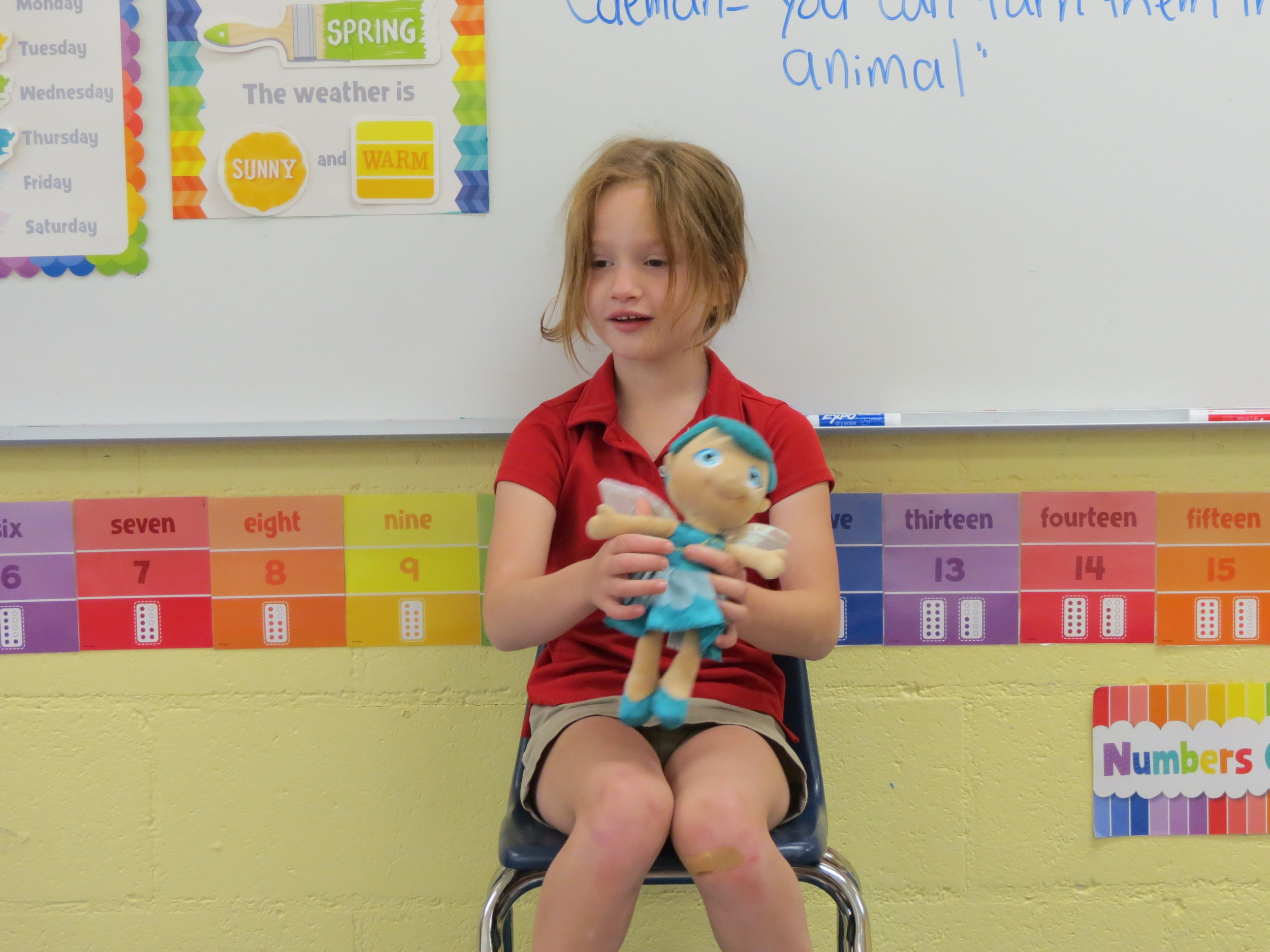One of the many things I love about St. James is that the students are taught, not only to be caring people, but to be good citizens. To help instill these characteristics, every grade level is responsible for taking on community service projects. Not just one, but several a semester. Some classes go to retirement homes and sing, bring and participate in interactive projects, and/or donate items that will lift the residents hearts. Other classes volunteer to serve at the local homeless shelter, pick up litter, and gather supplies for the needs of local community centers/shelters/projects. Students are encouraged to be an active participant in their community and go beyond a monetary donation. We teach the children to give their time and themselves.
Both Pre-K classes participated in our first community service project of the year. On Halloween, the children dressed up in their costumes and visited Opportunities, Inc. While at Opportunities, Inc., they sang fun Halloween songs to the students. The classes looked forward to singing to the students and hoped that they made them laugh and made their day a little brighter. We had our Halloween party at the Ashby farm following singing. The children enjoyed playing, having a hayride, playing games, and eating lunch.
Pumpkin math and science was a big hit with the children this week. Skills such as estimating (estimating a quantity weaves in mental computations that require problem solving and critical thinking), tallying (a quick way of keeping track of numbers in groups of 5), classifying (everyday activities that involve sorting are the beginning concepts of children developing math skills), and measuring circumference (we used yarn to measure our pumpkin, a great introduction to different forms of measurement).
First, the boys and girls used their yarn to measure the circumference around the largest pumpkin. Next, they estimated the number of lines on the pumpkin. Various answers were given, and Drew was our winner with an estimation of 11. After that, estimations were recorded in regard to the pumpkins weight, Ben came closest with his estimation of 20 lbs. Finally, we tallied the number of people who thought the pumpkin would float in water, and those who thought it would not float. To our amazement it floated! Hands on learning is always the best!!

































































